Mobs of French rioters, largely made up of teenagers, took to the streets for nearly a week from the end of June through early July, wreaking havoc in response to “police violence” in what has been described as “France’s George Floyd Moment.” The ensuing riots cost French businesses over $1 billion as numerous cities burned across the country.
Rioters caused damage from Paris all the way to Roubaix in the north and Marseilles in the south. Over a six-day period, the country deployed some 45,000 police to fight the mobs and arrested more than 3,600 people, including over 1,500 minors, whom French President Emmanuel Macron accused of using social media apps to organize riots.
Here’s the timeline of how the riots started and intensified, and where France stands after six days of destruction.
June 27: Nahel Merzouk Killed
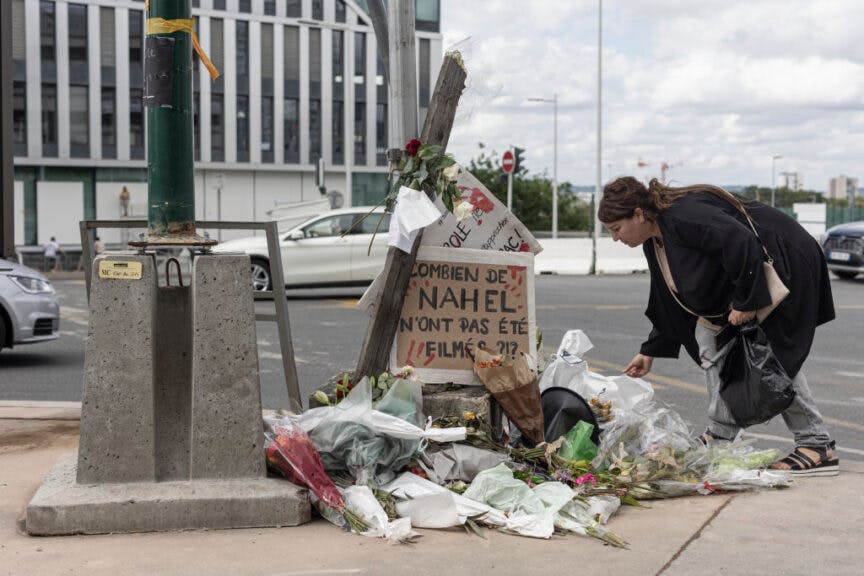
Sam Tarling/Getty Images
Nahel Merzouk, a 17-year-old of Moroccan and Algerian descent from a Paris suburb, was approached by officers on motorcycles at a red light for speeding in a bus lane. After being ordered to stop, Merzouk drove through the red light and committed multiple traffic violations. Heavy traffic forced him to come to a stop, and the officers got off their motorcycles, pointing their guns at the teen. When Merzouk again attempted to drive away from the police, one officer fatally shot him in the shoulder and chest.
The killing was captured on video and quickly spread on social media, causing outrage among many French who say the country is plagued by social inequities and institutional racism, but the government vehemently denies any “systemic racism or discrimination by law enforcement.”
Police initially said Merzouk was killed after officers’ lives were put in danger by the teen, according to the French newspaper Le Monde. However, Yassine Bouzrou, the lawyer representing Merzouk’s family, said the video footage contradicts the authorities’ version of events.
“Acting on behalf of the family of the deceased young man, we announce that we will file a complaint for intentional homicide against the policeman who fired the shot …” Bouzrou said.
Merzouk’s mother Mounia told France 5 television that she was angry at the officer who shot her son and accused him of targeting Merzouk because of his race.
“He saw a little, Arab-looking kid, he wanted to take his life,” she said. “A police officer cannot take his gun and fire at our children, take our children’s lives.”
June 27-28: Riots Begin
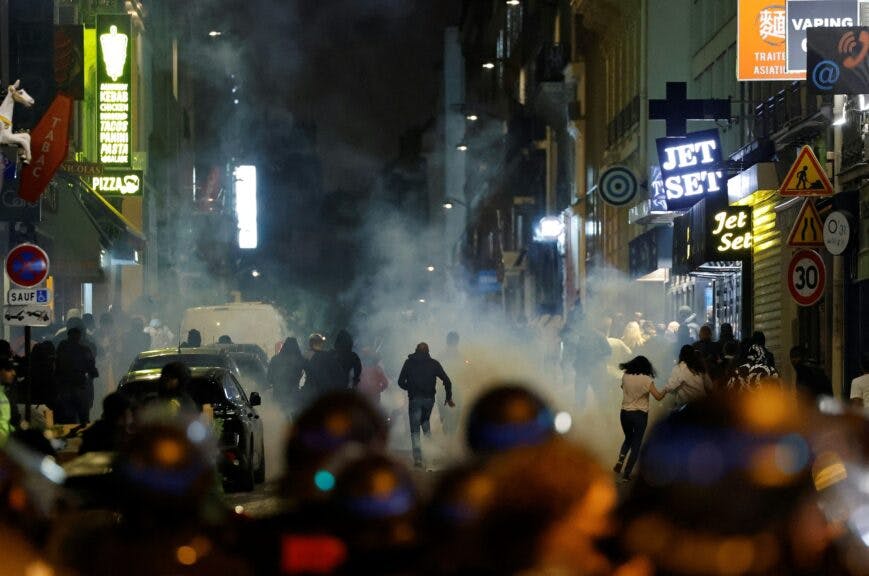
LUDOVIC MARIN/AFP via Getty Images
Violent riots rocked Paris and its surrounding suburbs immediately following Merzouk’s death. Rioters set fire to trash cans, cars, and buildings and clashed with police. During the first night of rioting, 24 police officers were injured and 31 people were arrested, according to French Interior Minister Gérald Darmanin. In Viry-Châtillon, a suburb just east of Paris, a group of young people set a bus ablaze and rioters threw rocks and shot fireworks at police, while rioters in Mantes-la-Jolie, roughly 25 miles northwest of Paris, set a town hall on fire.
June 29: Stores Looted, Arrests Ramp Up
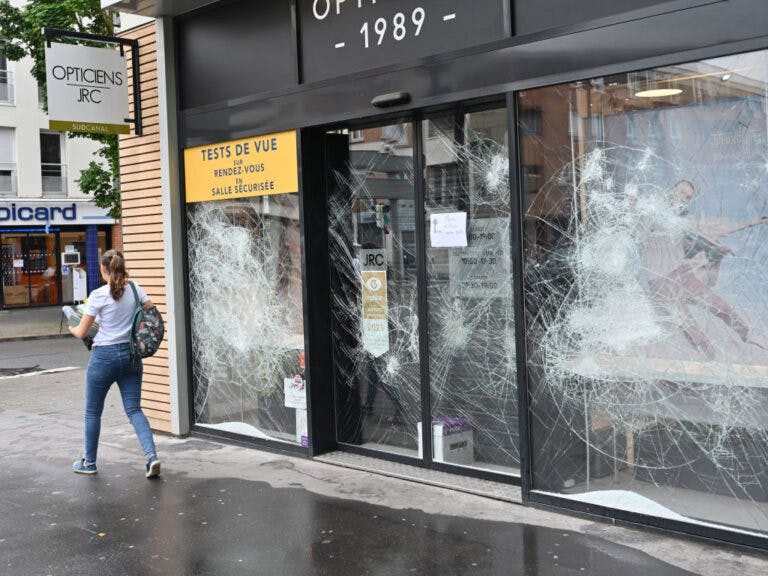
Mustafa Yalcin/Anadolu Agency via Getty Images
The French government deployed 40,000 police across the country by Thursday, June 29, as mobs looted stores and continued rioting. In Paris, retail stores Nike and Zara were vandalized and looted leading to over a dozen arrests, Le Monde reported. More stores on one of the city’s famous shopping streets were damaged by rioters breaking windows, and in an eastern suburb of the city, hundreds of teens ravaged a pharmacy and a McDonald’s.
June 30 – July 2: Violence Intensifies
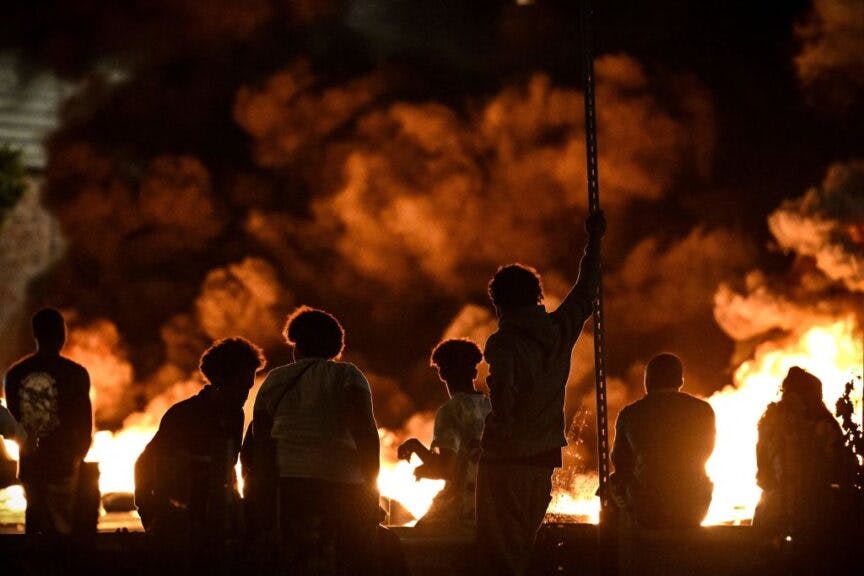
PHILIPPE LOPEZ/AFP via Getty Images
Dozens of police officers in the city of Lyon were injured — some by gunfire — on Friday, June 30, forcing Mayor Grégory Doucet to ask for reinforcements, saying police in the city were “overwhelmed.” Other cities across the country faced “apocalyptic” scenes of rioting on Friday night.
“The results of the night can be summed up in one word: apocalyptic,” Rudy Manna, of the Bouches-du-Rhône police union, said, according to The Telegraph. “We had scenes of guerrillas in the center of Marseille, the northern districts were also affected by looting, burning of vehicles and trash cans,” Manna added.
Around 30 young people broke into a gun store in Marseille and stole at least four hunting rifles. One of the thieves was arrested with a rifle and police were forced to guard the store after the break-in, the BBC reported.
On July 1, while riots plagued Marseille, a 27-year-old man died after being hit in the chest by a “flash ball” projectile often used by riot police, according to prosecutors, but authorities did not determine who fired the projectile, and it was unclear if the man who died was partaking in the riots.
Violence continued the next day when, in the early morning hours of July 2, rioters drove a car into a suburban mayor’s home before setting it on fire while his wife and two daughters slept inside. Vincent Jeanbrun — the mayor of south Paris suburb, L’Haÿ-les-Roses — was at a town hall when rioters attacked his home, but his wife and two young children were chased out by the mob. The local prosecutor called the attack on the mayor’s home and family an “assassination attempt.”
July 3-8: Riots End, But Protesters Defy Government Orders
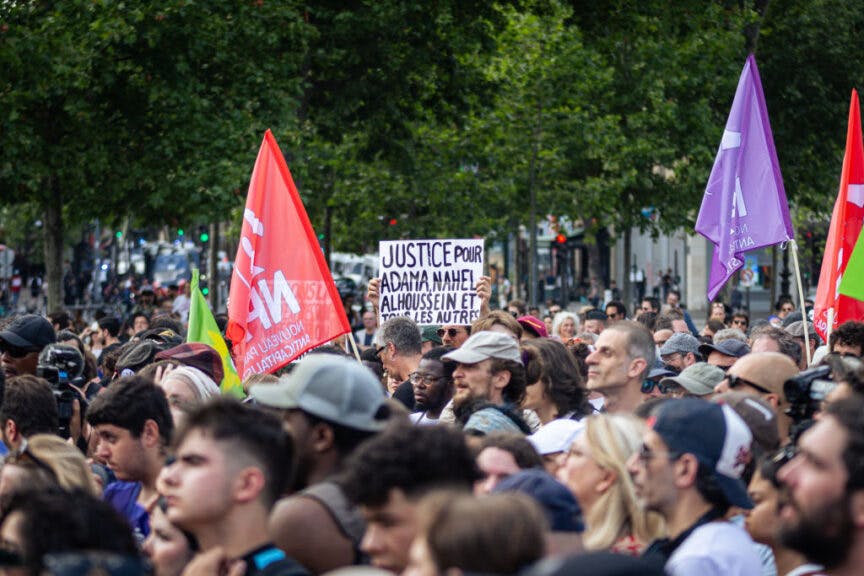
Telmo Pinto/SOPA Images/LightRocket via Getty Images
Arrests between Sunday night and Monday morning (July 3) dropped significantly as some demonstrators called for a “return to republican order.” While French authorities finally quelled much of the violence, demonstrators continued to take to the streets in Paris over the weekend, defying a government ban on the protest. Hundreds of people gathered to protest “police violence” on Saturday, leading to the arrest of two people, according to Reuters.
Demonstrations in other French cities such as Marseilles and Lille were also banned or ordered to be moved out of the city center. The Paris Police Department cited a “context of tensions” as the reason it moved to ban the protest in France’s capital. On Sunday, the French government also banned the sale, possession, and transport of all fireworks as the country prepares for its Bastille Day festivities on July 14, the BBC reported.
President Macron sympathized with the anger surrounding the killing of Merzouk, but has rebuked rioters, pinning much of the blame for the destruction on young people being inspired and organized through social media apps such as TikTok.
“We need to think about how young people use social networks … when things get out of hand, we may have to regulate them or cut them off,” Macron said. “Above all, we shouldn’t do this in the heat of the moment and I’m pleased we didn’t have to.”
“I think it’s a real debate that we need to have in the cold light of day,” he added.
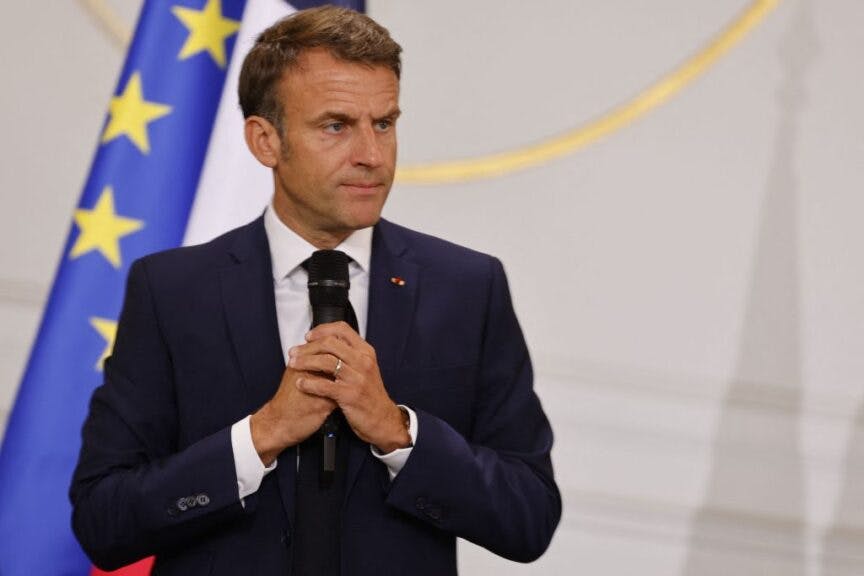
LUDOVIC MARIN/POOL/AFP via Getty Images
According to MEDEF, a French business association, about 200 businesses were looted alongside the destruction of 250 tobacco stores and 300 banks. French Finance Minister Bruno Le Maire promised those affected by the violent riots that the government would help them get back on their feet.
“If your store has been burned to the ground and a life’s work has been reduced to ashes, the state must be by your side,” he said. “We’ll do everything necessary so that economic activity can calmly pick up again in our country as quickly as possible.”

Continue reading this exclusive article and join the conversation, plus watch free videos on DW+
Already a member?

.png)
.png)

